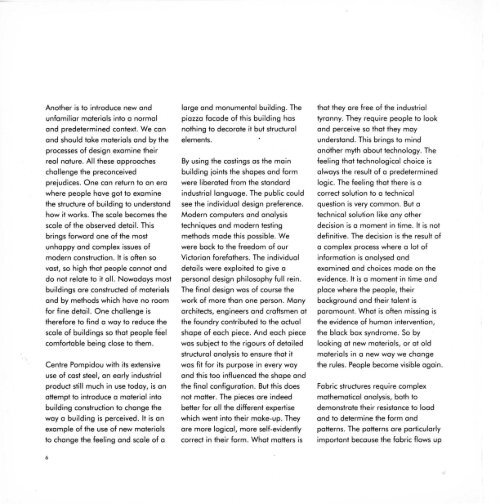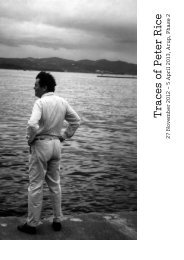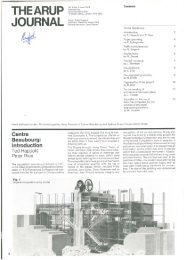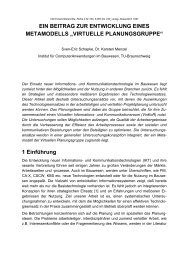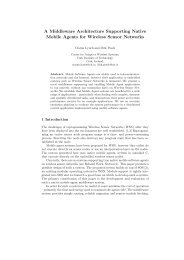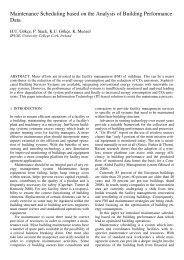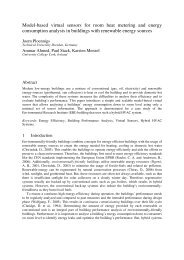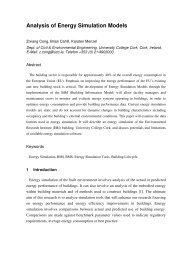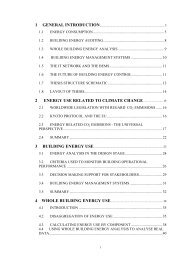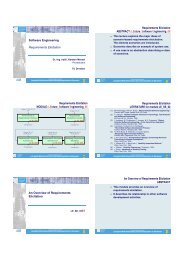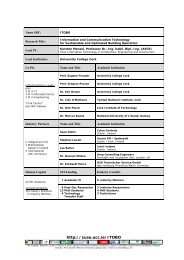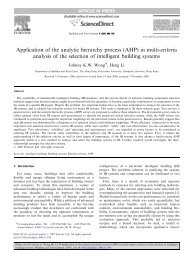peter rice
peter rice
peter rice
Create successful ePaper yourself
Turn your PDF publications into a flip-book with our unique Google optimized e-Paper software.
Another is to introduce new and<br />
unfamiliar materials into a normal<br />
and predetermined context. We con<br />
and should take materials and by the<br />
processes of design examine their<br />
real nature. All these approaches<br />
challenge the preconceived<br />
prejudices. One con return to on era<br />
where people hove got to examine<br />
the structure of building to understond<br />
how it works. The scale becomes the<br />
scale of the observed detail. This<br />
brings forward one of the most<br />
unhappy and complex issues of<br />
modern construction. It is often so<br />
vast, so high that people cannot and<br />
do not relate to it all. Nowadays most<br />
buildings ore constructed of moteriCJls<br />
and by methods which hove no room<br />
for fine detail. One challenge is<br />
therefore to find a way to reduce the<br />
scale of buildings so that people feel<br />
comfortable being close to them.<br />
Centre Pompidou with its extensive<br />
use of cost steel, on early industrial<br />
product still much in use today, is on<br />
attempt to introduce a material into<br />
building construction to change the<br />
way a building is perceived. It is on<br />
example of the use of new materials<br />
to change the feeling and scale of a<br />
large and monumental building. The<br />
piazza facode of this building hos<br />
nothing to decorate it but structural<br />
elements.<br />
By using the costings as the main<br />
building joints the shapes and form<br />
were liberated from the standard<br />
industrial language. The public could<br />
see the individual design preference.<br />
Modern computers and analysis<br />
techniques and modern testing<br />
methods mode this possible. We<br />
were bock to the freedom of our<br />
Victorian forefathers. The individual<br />
details were exploited to give a<br />
personal design philosophy full rein.<br />
The final design was of course the<br />
work of more than one person. Many<br />
architects, engineers and craftsmen at<br />
the foundry contributed to the actual<br />
shape of each piece. And each piece<br />
was subject to the rigours of detailed<br />
structural analysis to ensure that it<br />
was fit for its purpose in every way<br />
and this too influenced the shape and<br />
the final configuration. But this does<br />
not matter. The pieces ore indeed<br />
better for all the different expertise<br />
which went into their make-up. They<br />
ore more logical, more self-evidently<br />
correct in their form. What matters is<br />
that they ore free of the industrial<br />
tyranny. They require people to look<br />
and perceive so that they may<br />
understand. This brings to mind<br />
andther myth about technology. The<br />
feeling that technological choice is<br />
always the result of a predetermined<br />
logic. The feeling that there is a<br />
correct solution to a technical<br />
question is very common. But a<br />
technical solution like any other<br />
decision is a moment in time. It is not<br />
definitive. The decision is the result of<br />
a complex process where a lot of<br />
information is analysed and<br />
examined and choices mode on the<br />
evidence. It is a moment in time and<br />
place where the people, their<br />
background and their talent is<br />
paramount. What is often missing is<br />
the evidence of human intervention,<br />
the block box syndrome. So by<br />
looking at new materials, or at old<br />
materials in a new way we change<br />
the rules. People become visible again.<br />
Fabric structures require complex<br />
mathematical analysis, both to<br />
demonstrate their resistance to load<br />
and to determine the form and<br />
patterns. The patterns ore particularly<br />
important because the fabric flows up<br />
6


